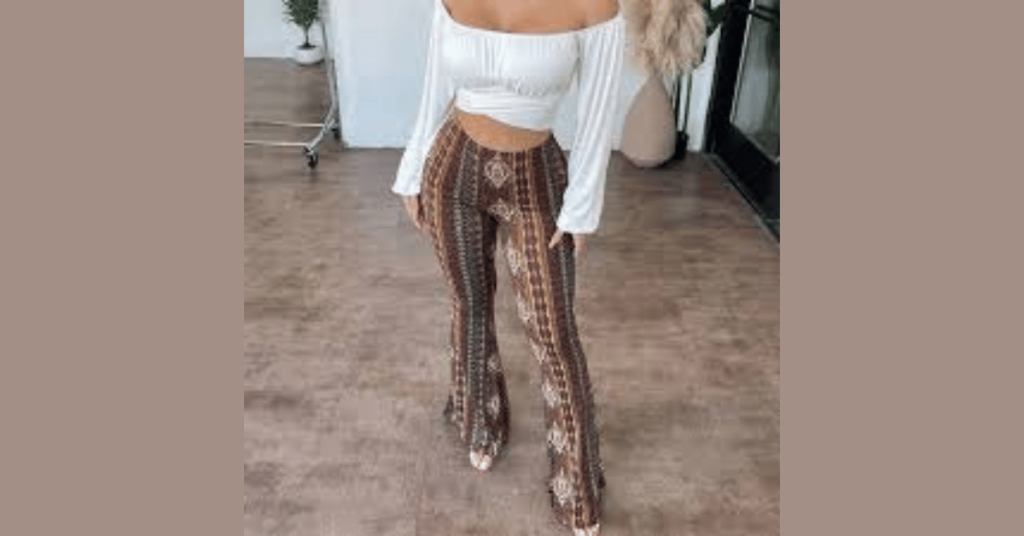Pants, an essential part of modern wardrobes, have a rich and varied history that intertwines with cultural norms, social movements, and political ideologies. Throughout history, pants have been subject to social and legal restrictions in various cultures, earning them the moniker “forbidden pants.” This article delves into the fascinating narrative of forbidden pants, exploring their cultural, historical, and symbolic significance.
The Origins and Evolution of Pants
Pants, also known as trousers, have been worn by humans for thousands of years. The oldest known trousers were discovered in China and date back to between the 10th and 13th centuries BCE. These early pants were likely designed for horseback riding, offering protection and mobility to the wearer. As pants spread across different cultures, they evolved in style and function, becoming a staple garment in many societies.
Pants in Ancient Societies
In ancient times, the wearing of pants was often associated with specific social and cultural roles. For instance, in ancient Greece and Rome, pants were typically worn by barbarian tribes and were considered uncivilized attire by the Greeks and Romans, who preferred tunics and togas. However, as the Roman Empire expanded and encountered various cultures, pants gradually gained acceptance, especially among soldiers and riders.
Medieval and Renaissance Europe
During the medieval and Renaissance periods in Europe, pants began to be worn more widely, particularly by men. However, sumptuary laws regulated who could wear certain types of clothing, including pants. These laws were designed to maintain class distinctions and reinforce social hierarchies. For example, certain fabrics and styles of pants were reserved for the nobility, while the lower classes were restricted to simpler garments.
Women and Pants: A History of Restriction
One of the most notable aspects of forbidden pants is the restriction placed on women wearing them. Historically, pants were considered men’s clothing, and women who donned them often faced social ostracism, legal penalties, or even accusations of witchcraft. This section explores key moments in the history of women’s struggle for the right to wear pants.
The French Revolution and Beyond
During the French Revolution (1789-1799), women played significant roles in the struggle for liberty, equality, and fraternity. Some women adopted male clothing, including pants, as a symbol of their political engagement. However, in 1800, the French government passed a law requiring women to obtain police permission to “dress as men,” effectively banning women from wearing pants. This law remained in place until it was officially repealed in 2013, although it had long ceased to be enforced.
The Bloomer Movement
In the mid-19th century, the women’s rights movement in the United States saw a significant development with the introduction of “bloomers.” Named after activist Amelia Bloomer, these loose-fitting trousers were worn under a short dress or tunic, offering greater freedom of movement than traditional women’s attire. Despite the practical benefits of bloomers, they were widely ridiculed and criticized, illustrating the deep-seated resistance to women wearing pants.
World Wars and Changing Norms
The two World Wars marked a turning point in the acceptance of women wearing pants. With men away fighting, women entered the workforce in unprecedented numbers, taking on roles that required practical clothing. Pants became a necessity for many working women, leading to a gradual shift in societal norms. After World War II, women continued to wear pants in increasing numbers, particularly in casual and professional settings.
Pants as Political Statements
Forbidden pants – Throughout history, pants have served as powerful symbols of political and social movements. This section examines how pants have been used to challenge authority, assert identity, and promote change.
The Suffrage Movement
In the early 20th century, the women’s suffrage movement used pants as a symbol of gender equality. Suffragettes like Alice Paul and Lucy Burns wore tailored pantsuits during protests and public appearances, challenging traditional gender roles and advocating for women’s right to vote. The adoption of pants by suffragettes was both a practical choice and a political statement, highlighting their demand for equal rights.
The Civil Rights Movement
During the Civil Rights Movement of the 1950s and 1960s, pants became a symbol of resistance and empowerment for African Americans. Civil rights activists, including women like Rosa Parks and Angela Davis, wore pants as a rejection of the conservative dress codes imposed on black communities. By choosing to wear pants, these activists defied societal expectations and asserted their autonomy.
The LGBTQ+ Movement
In the LGBTQ+ movement, pants have been used to challenge traditional gender norms and promote gender expression. Drag kings and queens, non-binary individuals, and transgender people have used clothing, including pants, to express their identities and advocate for acceptance and rights. The act of wearing pants, in this context, becomes a form of resistance against rigid gender binaries and discrimination.
Pants in Modern Fashion
Today, pants are a ubiquitous part of fashion for all genders. However, the journey to this point has been marked by significant cultural shifts and ongoing debates about gender, identity, and self-expression. This section explores the evolution of pants in modern fashion and their role in contemporary culture.
The Rise of Unisex Fashion
The late 20th and early 21st centuries have seen a rise in unisex and gender-neutral fashion, reflecting broader societal shifts towards inclusivity and diversity. Designers like Yves Saint Laurent and Vivienne Westwood have played pivotal roles in breaking down gender barriers in fashion, introducing pantsuits for women and challenging traditional gendered clothing norms.
High Fashion and Runways
Pants have become a staple on high-fashion runways, with designers continually reinventing them to make bold statements. From wide-leg trousers to skinny jeans, from tailored suits to casual joggers, pants offer endless possibilities for creativity and expression. High fashion has embraced pants as a versatile and powerful garment, capable of conveying a wide range of messages.
Streetwear and Subcultures
Streetwear and subcultures have also played a crucial role in shaping the cultural significance of pants. From the baggy jeans of hip-hop culture to the tailored trousers of the mod scene, pants have been central to the identities and aesthetics of various subcultures. These movements often use clothing, including pants, to express resistance, individuality, and community.
Pants and the Law
While the outright prohibition of pants may seem like a relic of the past, legal battles over the right to wear pants have persisted into the modern era. This section examines some notable legal cases and regulations related to pants.
The Case of Ann Hopkins
In the 1980s, Ann Hopkins, a senior manager at the accounting firm Price Waterhouse, was denied promotion to partner in part because she did not conform to traditional feminine dress codes. Hopkins, who often wore pants to work, sued the firm for sex discrimination. In a landmark 1989 ruling, the U.S. Supreme Court sided with Hopkins, recognizing that gender stereotyping in the workplace is a form of discrimination.
School Dress Codes
School dress codes have also been a battleground for the right to wear pants. In many schools, particularly in the United States, girls have fought for the right to wear pants instead of skirts or dresses. Legal challenges and student activism have led to changes in school policies, promoting gender equality and the right to self-expression.
Workplace Dress Codes
Workplace dress codes have evolved significantly, but issues remain. In some industries, women are still expected to wear skirts or dresses, while men are required to wear pants. Legal challenges and changing societal norms continue to push for more inclusive and flexible dress codes that allow individuals to choose attire that suits their identity and comfort.
The Future of Pants
As we look to the future, the cultural and symbolic significance of pants will continue to evolve. Technological advancements, changing social norms, and ongoing struggles for equality and self-expression will shape the future of this ubiquitous garment.
Technological Innovations
Technological innovations are transforming the design and functionality of pants. Smart fabrics, wearable technology, and sustainable materials are opening new possibilities for pants that adapt to the wearer’s needs and minimize environmental impact. Designers are experimenting with pants that can change color, adjust temperature, and even monitor health.
Gender Inclusivity
The push for gender inclusivity in fashion shows no signs of slowing down. As society becomes more accepting of diverse gender identities, pants will continue to be a key garment in the movement towards more inclusive fashion. Brands and designers are increasingly offering gender-neutral options, recognizing that clothing should not be confined by traditional gender norms.
Cultural Exchange
Globalization and cultural exchange are also influencing the future of pants. Traditional garments from various cultures, such as the Indian dhoti, Japanese hakama, and African kente pants, are being incorporated into contemporary fashion, celebrating cultural diversity and fostering cross-cultural understanding.
Conclusion
The history of forbidden pants is a testament to the power of clothing as a symbol of identity, resistance, and change. From ancient societies to modern fashion, pants have been at the center of cultural and political struggles, challenging norms and redefining boundaries. As we move forward, the legacy of forbidden pants will continue to inspire and shape our understanding of clothing, identity, and freedom.







